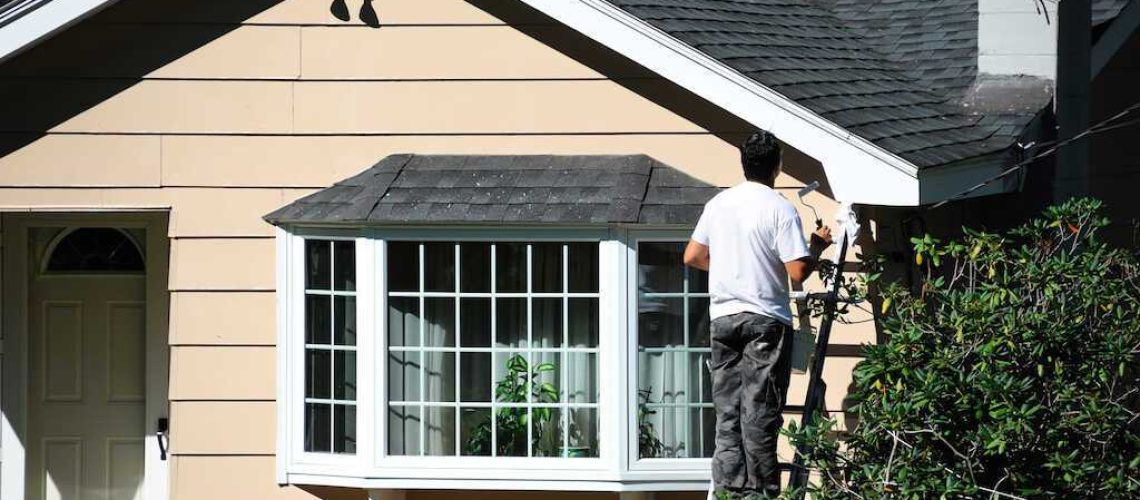Did you know that it costs around $13,300 for vinyl siding replacements? This average is based on a 2,450 square foot home, and vinyl siding is one of the cheapest options! Replacing your home’s exterior siding is not an inexpensive home project, but it can drastically affect monthly energy costs and keep your home protected.
But how can you choose siding styles that fit your home’s aesthetics while being cost-friendly? Luckily, we have put together a complete guide on the most popular siding styles, their pros and cons, and how to get started today. Keep reading for more information!
Siding Styles
There are many vinyl siding styles, and some take on the look of others for a cheaper cost. What are some of the most common house siding styles?
- Vinyl
- Brick
- Stone
- Fiber Cement
- Engineered wood
- Shaker style
New siding can boost market value, improve aesthetics, and increase your home’s energy efficiency. Many types of siding styles are also weatherproof and offer an added layer of protection to your home.
How To Choose the Best Siding Materials
When it comes to fixing up your home’s siding or replacing it, you want the most cost-friendly, durable, and weatherproof materials out there. Let’s break down some of the pros and cons of specific siding.
Wood looks amazing and can have exterior finishes that help with fireproofing. In some instances, you can place your wood siding over previous materials. Yet, it is costly and does run the risk of rotting.
Engineered wood is lighter, affordable, and aesthetically pleasing. Brick and stone siding is highly durable and provides a unique masonry look that may appeal to homeowners.
Both these siding styles are more expensive but will last for decades and require less upkeep than wood. If you are willing to pay the price of brick or stone, it can completely redesign the look of your house!
Shaker style siding is made of a wood split, giving it a more rustic appearance. Cedar shaker style siding is one of the more popular options, but vinyl shaker style can also be an alternative. It will give the impression of shaker style siding without the higher costs and maintenance.
Lastly, fiber cement and traditional vinyl siding are two of the more popular options for homeowners, so let’s dive into those a bit deeper.
Fiber Cement Siding Pros and Cons
Fiber cement is the perfect option for a siding style that combines durability and affordability. Fiber cement siding is also rot, fire, and weatherproof, making it an excellent option for many homeowners, no matter where they live! Another added benefit is fiber cement siding can take on the look of other popular styles, such as:
- Wood clapboards
- Shingles
- Stone
- Brick
And if you have a concern about pricing, fiber cement costs from less than $1 to over $5 per square foot, which is much cheaper than many other shingle styles. It should also last you around 25 years, and most qualified businesses carry a 15-year warranty. Compared to vinyl, it can withstand higher winds and temperature changes.
The downside of fiber cement siding is that it requires regular maintenance and can be more difficult to install. You can eliminate this problem by asking a qualified siding installer about their expertise and qualifications for installing fiber cement.
Vinyl Siding Pros and Cons
There are several benefits of installing vinyl siding, with one of the most important ones being it is cheaper than most options! It can also boost curb appeal and requires less maintenance. Here are some other key benefits of choosing vinyl siding styles:
- Improved home value
- Improved energy efficiency
- Fewer painting costs
Compared to other vinyl siding styles, it is fairly inexpensive. For example, when stacked against fiber cement siding, it can sometimes cost half as less and has fewer labor expenses. It is also an excellent option if you want something with minimal maintenance.
There are plenty of exterior vinyl siding styles, which makes it appealing to many homeowners. Some of the more common ones include:
- Clapboard
- Smooth
- Wood grain
- Traditional shake
- Cedar shake
- Log vinyl
Its customization can distinguish you from other homeowners with similar styles while keeping costs affordable. However, it does have a few downsides.
Its low maintenance doesn’t always mean you won’t run into problems. In extreme temperature changes or severe storm systems, vinyl siding has a greater likelihood of breaking down more quickly.
While most vinyl siding lasts upwards of 30 years, homes in harsher climates can drop this number to 10 to 15 years. Lastly, you run the risk of moisture building up behind the vinyl siding. In the long run, this can cause issues with rot and mold.
How To Find Siding Installers
At Freeman Exteriors, you will have extended warranty coverage and a quality service guarantee. Whenever you tackle a large project like house siding, you want to know that your home is covered and that you receive satisfactory results.
Most fiber cement siding and vinyl problems can fall back onto contractors and installers. Improper installation can reduce energy efficiency ratings and put your home’s interior at risk of water or weather damage. Calling on a professional company versus doing it yourself can save you money in the long term.
Upgrade Your Siding Today
Have you wondered how you can upgrade your home’s exterior siding? With so many siding styles on the market, picking one may seem like a challenge. Luckily, the experts at Freeman Exteriors can help assess your home and determine which siding materials could work for your home.
We will go over pricing, financing, maintenance, and much more. Ready to get started? Call the vinyl siding experts at Freeman Exteriors for all your home exterior siding needs.




